January 8, 2025 | 00:00 GMT +7
January 8, 2025 | 00:00 GMT +7
Hotline: 0913.378.918
January 8, 2025 | 00:00 GMT +7
Hotline: 0913.378.918
Innovation and enhancing the value of Vietnamese craft village products were among the topics that attracted attention and contributions from experts at the International Workshop on Conservation and Development of Craft Villages held in Hanoi. The event was part of the framework of the Festival on Preservation and Development of Vietnamese Craft Villages in 2023.
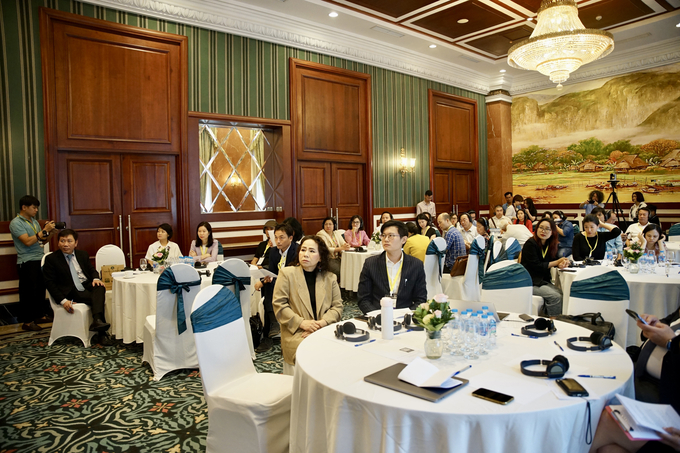
Session on Innovation to increase added value for craft village products within the framework of the International Conference on Conservation and Development of Craft Villages.
Nguyen Do Anh Tuan, Head of the International Cooperation Department (Ministry of Agriculture and Rural Development), stated that Vietnam has a solid foundation with over 2,000 handicraft villages belonging to 11 main groups such as lacquerware, ceramics, lace embroidery, bamboo and rattan weaving, mat weaving, weaving, papermaking, folk painting, wood carving, and stone carving. These villages span from the North to the South, with tens of thousands of products and thousands of artisans contributing positively to socio-economic development. Handicraft exports amount to about USD 3.5 billion annually, creating over 2 million jobs.
With the global handicraft market reaching USD 752.2 billion and expected to grow at 10% annually, reaching approximately USD1,296.6 billion by 2028, Vietnam is presented with a tremendous opportunity to explore new markets, generate new income, and share additional values related to the environment, culture, and uniqueness of Vietnam with global consumers.
Tuan believes that the added value of craft village products can be enhanced through better design and the application of information technology to ensure food safety. Moreover, products can convey more messages about human values and cultural significance.
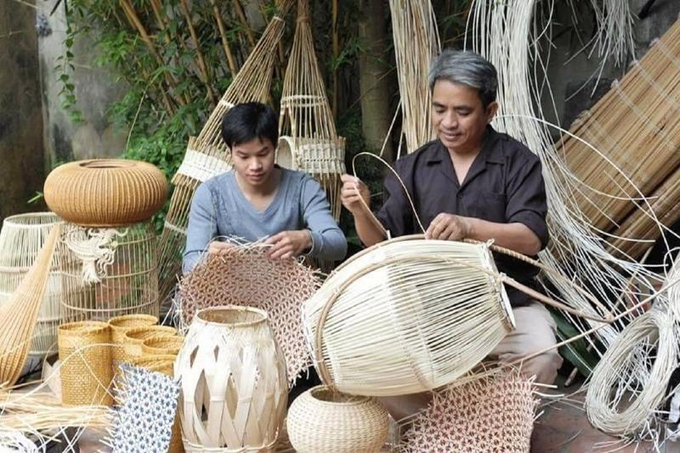
Making bamboo and rattan in Phu Vinh, Hanoi. Photo: VnEconomy.
From the perspective of the Ministry of Agriculture and Rural Development, the representative of the International Cooperation Department stated that "multi-value integration" is one of the key phrases in the Strategy for sustainable agricultural and rural development from 2021 to 2030, with a vision until 2050. In this context, the story of craft villages is becoming increasingly important because it involves not only raw products being sold but also products going through initial processing, craftsmanship, and crystallizing cultural, traditional, and environmental values of the craft villages.
Sharing the experience of designing handicraft products, Professor Claus from Lund University's Design School in Sweden believes that the digitization process and the application of new technologies are crucial trends in craft village production. These trends help preserve and develop craft villages by connecting traditions, heritage, and the younger generation.
"However, to maintain the attractiveness of craft villages and attract the participation of the youth, questions need to be raised about preserving the traditional skills of artisans in the context of advancing technology. This requires flexibility and a long-term design strategy to not only preserve traditions but also develop products in new directions," acknowledges Professor Claus.
For many traditional craft villages across Vietnam, tourism is not only a new source of income but also an opportunity to share the stories behind delicate handmade products. Combining the preservation of traditions with creating new experiences for tourists helps craft villages not only exist but also develop sustainably in the future. However, to promote added value for craft villages through tourism, it is essential to keep up with the modern digitization trends that other industries are strongly embracing.
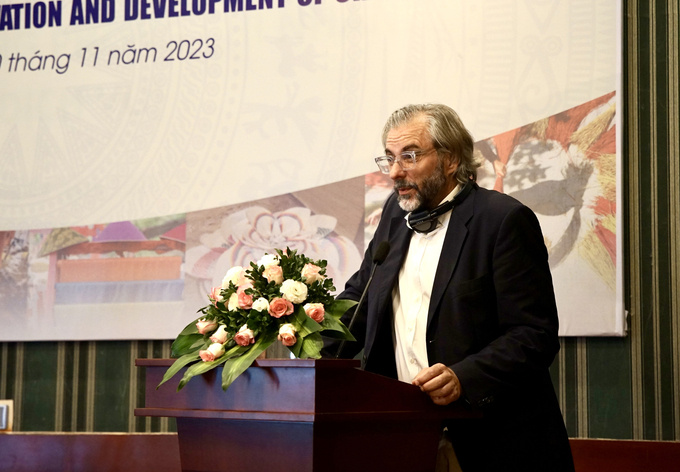
Professor Claus, School of Design, Lund University, Sweden, believes that the process of digitalization and application of new technology is an important trend in production in craft villages, helping to preserve and develop craft villages.
Sharing a model for sustainable rural tourism through digital transformation, Mr. Le Ba Ngoc, Secretary-General of the Vietnam Handicraft Exporters Association (Vietcraft), stated that rural tourism and craft village tourism are emerging trends. According to the World Tourism Organization's statistics, rural tourism accounts for 10% of participants and generates approximately USD 30 billion in revenue. The annual growth rate ranges from 10% to 30%, while traditional tourism only averages a 4% annual increase.
Vietnam offers various forms of rual tourism, including community-based tourism, agritourism, and ecotourism. Other forms of tourism in rural areas, such as craft village tourism and festival tourism, are all connected to the three main types mentioned earlier.
However, according to Mr. Ngoc, there should be more focus on craft village tourism. To attract more tourists to visit and experience craft villages, there is a need to adopt digital tools such as digital maps, interactive videos, audio guides, virtual reality technology, etc. These tools aid in marketing, attracting visitors to destinations, simplifying tourists' trips, improving service quality, creating favorable conditions for shopping, and promoting sustainable income and employment opportunities.
Translated by Linh Linh
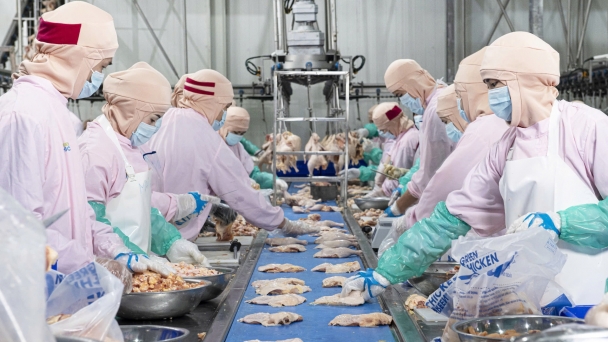
On January 3, the Department of Livestock Production held a conference to review the work in 2024 and deploy the work plan for 2025.
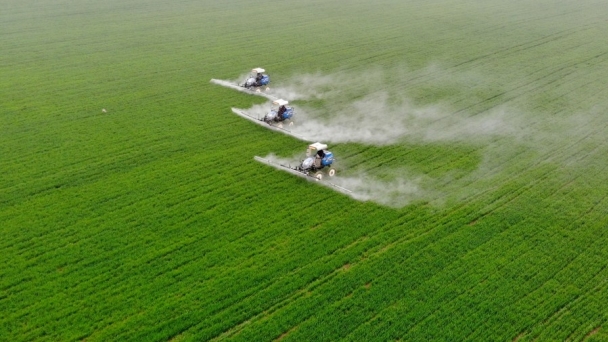
(VAN) According to the Food and Agriculture Organization of the United Nations, crop pests and diseases cause annual yield losses of up to 40 percent, leading to economic damages exceeding $220 billion.
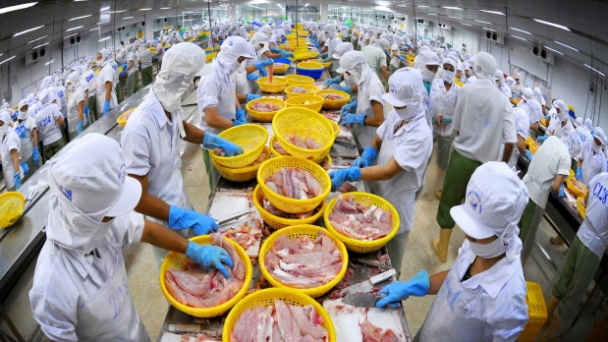
(VAN) Despite numerous challenges, Vietnam's seafood exports in 2024 reached over 10 billion USD, up 12.1% from 2023.

(VAN) The Vietnamese trade counselor in the United States predicts a positive outlook for this market in early 2025 and recommends several solutions.

(VAN) China has approved five gene-edited crop varieties and 12 types of genetically modified (GM) soybean, corn and cotton, expanding approvals to boost high-yield crops, reduce import reliance, and ensure food security.

(VAN) The French Ambassador to Vietnam discussed the necessity of enhancing bilateral and multilateral collaboration to address climate change, particularly in the agricultural sector.

(VAN) On December 30, MARD and the International Livestock Research Institute (ILRI) held a consultation meeting to review the results of the CGIAR One Health Initiative as part of its project completion process.